Are you a dedicated dog owner striving to provide the best possible nutrition for your furry companion? The journey to a long, healthy life for our dogs often begins with what’s in their food bowl. While commercial options abound, preparing Healthy Homemade Dog Food offers unparalleled control over ingredients, ensuring your pet receives a truly balanced and nutritious diet. This comprehensive guide, based on a recipe recommended by a veterinarian, will walk you through creating delicious and wholesome meals that your dog will adore. You’ll know exactly what goes into their food, from high-quality proteins to essential vitamins and minerals, ultimately contributing to a shiny coat, healthy teeth, and vibrant energy. what can i feed my dog to ensure a balanced diet.
Why Choose Healthy Homemade Dog Food?
Opting for homemade dog food goes beyond just satisfying hunger; it’s a commitment to your pet’s overall well-being. The primary advantage lies in knowing precisely every ingredient your dog consumes, eliminating concerns about artificial additives, fillers, or unidentifiable by-products often found in commercial kibble. This recipe is meticulously balanced, ensuring your dog receives all necessary nutrients for optimal health.
Beyond the nutritional benefits, this recipe is designed for convenience, especially when preparing in bulk. Imagine making a large batch once or twice a month, freezing it, and thawing portions as needed. This approach saves time and ensures a consistent, healthy diet for your pet. For example, a batch of approximately 11 pounds (uncooked) can last nearly three weeks for two small adult dogs weighing around 10 lbs each. Furthermore, this versatile recipe allows for variety; you can easily substitute ground beef with ground turkey or chicken, simply adjusting the beef liver content to maintain adequate iron, zinc, and protein levels, keeping your dog’s meals exciting and nutritious.
Determining the Right Portions for Your Dog
Ensuring your dog receives the correct amount of food is crucial for maintaining a healthy weight and preventing health issues. Always consult with your veterinarian to determine the precise caloric and portion requirements for your individual dog, as these can vary based on age, activity level, breed, and metabolism.
Generally, it’s recommended to feed adult dogs between 2-3% of their total body weight daily. For instance, if your dog weighs 12 lbs and requires 2.5% of their body weight in food daily, you would calculate 0.025 * 12 lbs = 0.3 lbs. Converting this to ounces (1 lb = 16 oz), that’s 4.8 ounces per day. If you feed your dog twice a day, each serving would be 2.4 ounces. This personalized approach helps prevent both underfeeding and overfeeding, promoting a healthy weight and overall wellness.
Key Nutrients in This Homemade Recipe
This veterinarian-recommended recipe is formulated to be nutritionally complete, providing approximately 40 calories per ounce. The careful selection of ingredients ensures a spectrum of essential vitamins, minerals, antioxidants, and fatty acids crucial for your dog’s health. For a deeper dive into the specific nutritional values of each component, you can refer to the original recipe and detailed information provided by Dr. Karen Becker and Rodney Habib on YouTube. Understanding the nutritional breakdown empowers you to appreciate the holistic benefits of this homemade meal.
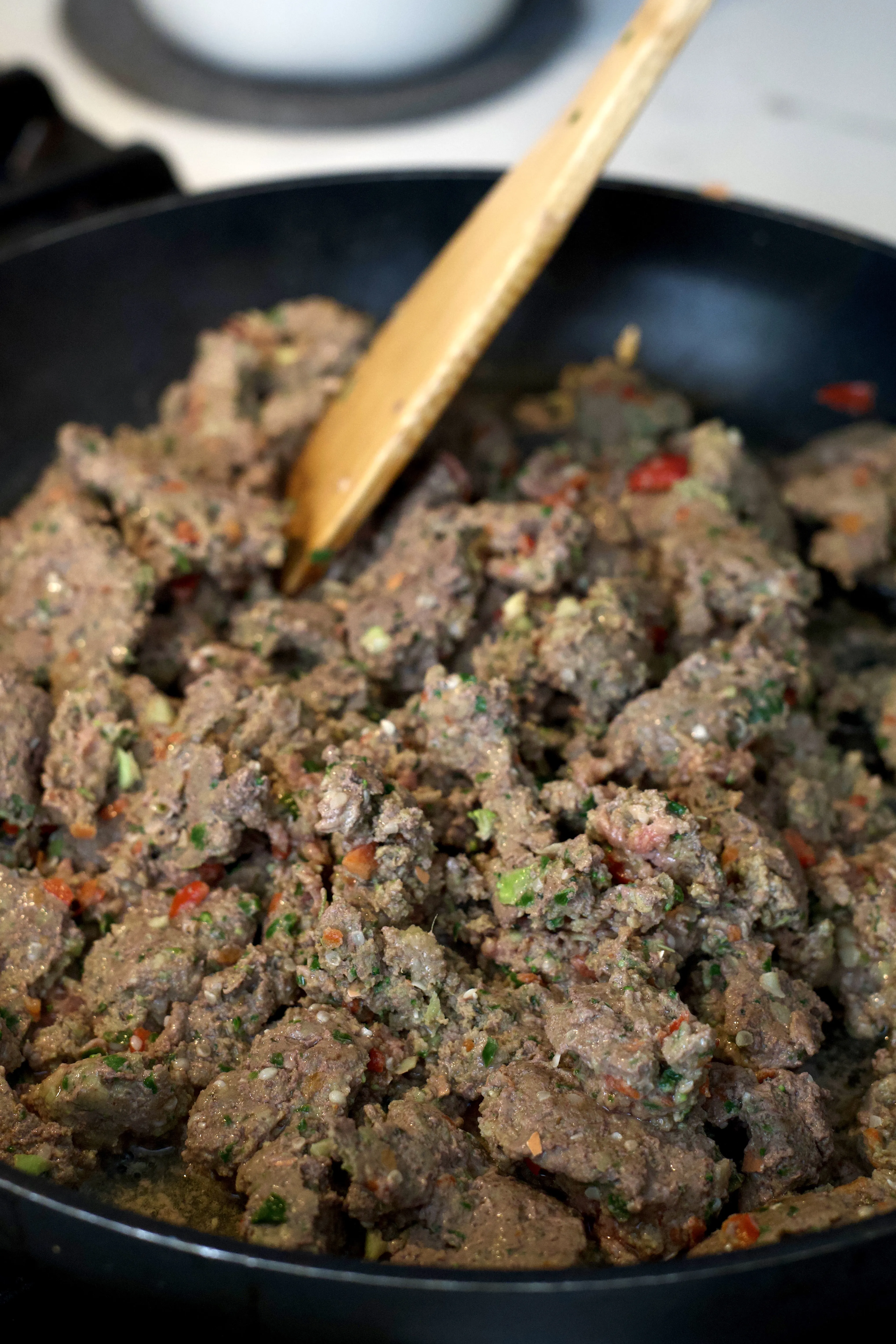 Variety of fresh ingredients laid out, including meat, vegetables, and supplements, for preparing healthy homemade dog food.
Variety of fresh ingredients laid out, including meat, vegetables, and supplements, for preparing healthy homemade dog food.
Cooked vs. Raw: Preparing Your Dog’s Food
This versatile recipe can be adapted for both gently cooked and raw diets, depending on your preference and your veterinarian’s recommendation. Many dog owners choose to gently cook the food to minimize risks associated with raw meat, while still preserving most of the nutrients.
If you opt for cooking, use a nonstick pan over low heat and avoid adding any oil. The goal is to gently cook the meat until it is just done, without searing it. You can form the food into patties, leave it in large chunks, or break it down into a mince, based on your dog’s preference. For those using stainless steel pans, proper technique is key to prevent sticking. Heat the pan for at least three minutes. Test readiness by splashing a small amount of water; if it sizzles and evaporates, the pan isn’t ready. However, if the water beads and “dances” around, it’s perfectly heated. At this point, reduce the heat as much as possible, let the pan cool slightly, then add the food for gentle cooking. what meat should you not give to dogs is an important consideration for both raw and cooked diets.
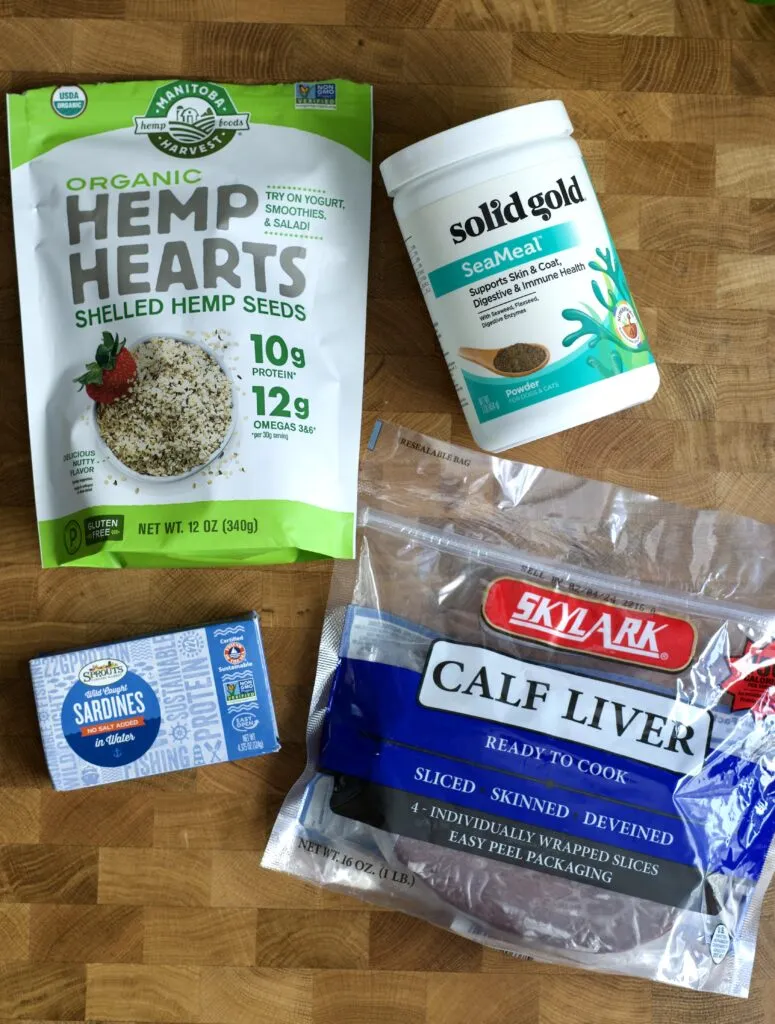 Gently cooked homemade dog food formed into small patties, ready for serving or storage.
Gently cooked homemade dog food formed into small patties, ready for serving or storage.
Essential Ingredients for a Balanced Dog Diet
Each ingredient in this healthy homemade dog food recipe plays a vital role in providing a complete and balanced diet:
- Very Lean Ground Beef or Poultry: This is the cornerstone of the recipe, providing the primary source of protein. Dogs have high amino acid requirements, making lean meat essential. If you choose ground chicken or turkey, which are naturally lower in protein, iron, and zinc compared to beef, you’ll need to increase the amount of beef liver to compensate.
- Hempseed: An excellent source of essential fatty acids, including omega-3 and omega-6, which are crucial for balancing fats in the diet and supporting skin and coat health. While hempseed oil can be used, it’s vital to be cautious with heat, as high temperatures can make it unpalatable for dogs.
- Sardines: These small fish are packed with Vitamin E and D, vital for various bodily functions. Always use canned sardines in water, not oil, to avoid unhealthy fats. Cod liver oil can be a suitable alternative.
- Ground Ginger: A powerhouse of manganese, ginger supports connective tissue health, benefiting ligaments, tendons, joints, and muscles—especially important for active dogs or those prone to joint issues.
- Kelp Powder: Rich in iodine, kelp powder is phenomenal for maintaining healthy teeth and a lustrous coat. Many dog owners report significant improvements in their pets’ breath and overall appearance after incorporating kelp.
- Eggs & Eggshells: Eggs offer a great source of folic acid and Vitamin B12. The eggshells, when properly pulverized, are completely edible and provide the necessary calcium for adult dogs. However, they are not suitable for puppies, who have different calcium requirements.
- Beef Liver: A nutrient-dense organ meat that supplies vital copper, zinc, and iron. These minerals are essential for blood health, immune function, and various metabolic processes.
- Broccoli, Red Bell Pepper, & Spinach: These vegetables contribute a wealth of antioxidants, phytonutrients, enzymes, and fiber to the diet. Fiber aids digestion, while antioxidants combat free radicals. It’s important to note that spinach should be omitted for senior dogs with kidney issues due to its oxalate and high sodium content; however, small amounts are perfectly safe for healthy dogs. what vegetables are harmful to dogs should be researched carefully before adding any new vegetables.
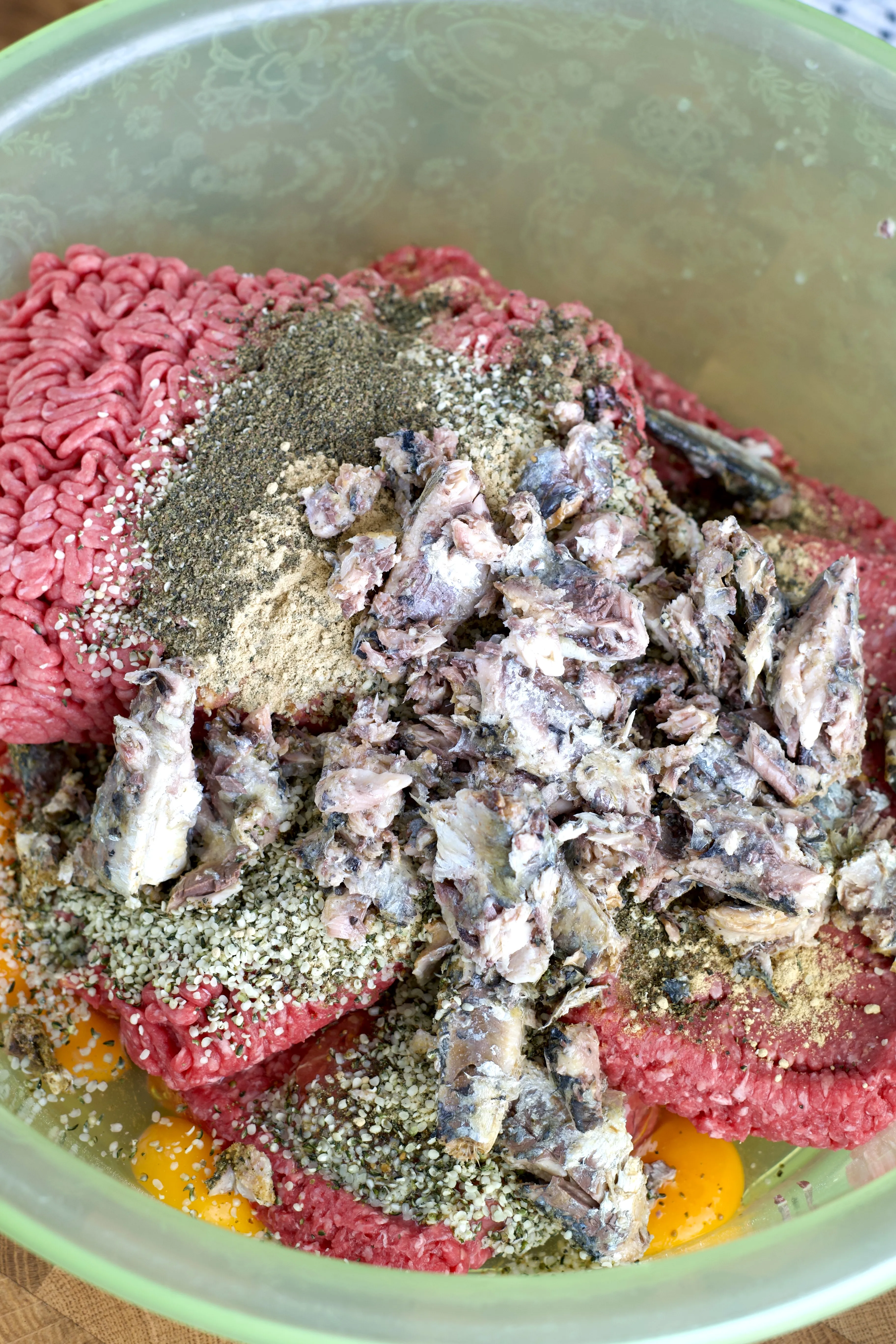 Raw ground beef mixed with wet ingredients like sardines, kelp, and eggs, ready for further processing.
Raw ground beef mixed with wet ingredients like sardines, kelp, and eggs, ready for further processing.
Step-by-Step Guide to Making Healthy Homemade Dog Food
Creating this balanced meal for your dog is a straightforward process. Follow these steps to ensure a well-combined and nutritious batch:
- Combine the Base Ingredients: In a large bowl, thoroughly mix the ground beef (or poultry), eggs, kelp powder, ground ginger, hempseed, sardines (drained of water and broken up for even distribution), and pumpkin puree if you choose to include it for digestive health. The pumpkin puree is an optional addition to the original recipe but can be beneficial. Set aside half of the eggshells.
- Process Vegetables and Liver: Next, add the remaining vegetables (broccoli, red bell pepper, and the reserved eggshells) along with the beef liver to a food processor. Blend until all ingredients are finely and evenly chopped. Depending on the size of your food processor, you may need to work in batches to achieve a consistent texture.
- Final Mix: Once the vegetable and liver mixture is processed, add it to the large bowl containing the meat mixture. Mix everything thoroughly until all ingredients are well combined and uniformly distributed. This ensures every portion your dog receives is nutritionally complete.
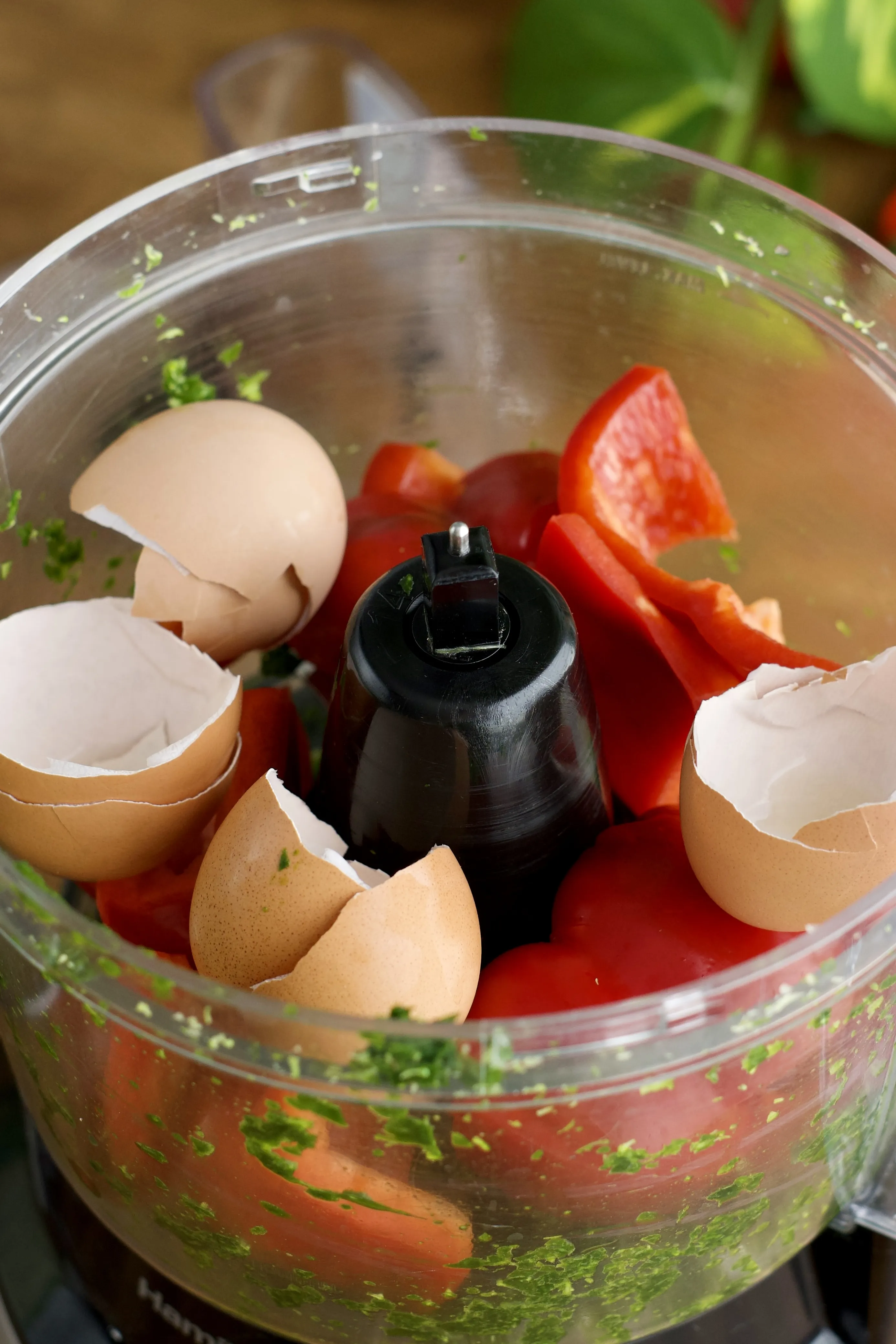 Chopped vegetables and beef liver being processed in a food processor, a key step for even distribution.
Chopped vegetables and beef liver being processed in a food processor, a key step for even distribution.
Storage Tips for Freshness and Convenience
Proper storage is key to making your healthy homemade dog food practical and safe. This recipe yields a substantial amount, making batch cooking highly efficient.
- Portioning: Begin by portioning out the food according to your dog’s daily intake requirements. This makes meal prep quick and easy each day.
- Freezer Storage: Uncooked portions can be stored safely in the freezer for several weeks, providing a long-term supply.
- Refrigerator Storage: Once thawed or cooked, the food should only be kept in the refrigerator for a few days, typically no more than four, to maintain freshness and prevent spoilage. Always allow cooked food to cool completely before refrigerating.
- Eco-Friendly Option: To reduce plastic waste, consider investing in reusable freezer bags. They are durable, economical, and a great way to store individual portions efficiently. best way to store dry dog food long term can offer additional tips for various food types.
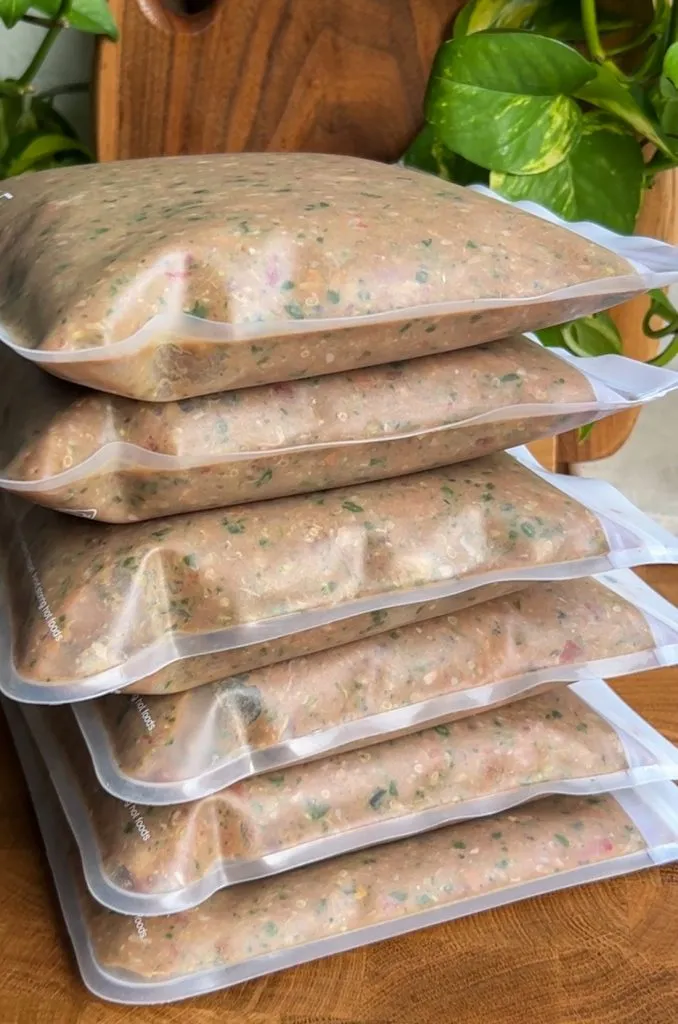 Portioned homemade dog food stored in reusable freezer bags, ready for convenient thawing and serving.
Portioned homemade dog food stored in reusable freezer bags, ready for convenient thawing and serving.
Beyond Meals: Healthy Homemade Dog Treats
In addition to nourishing meals, offering healthy treats can further enhance your dog’s diet and provide targeted nutritional benefits. Just as you prioritize wholesome ingredients for their main food, extending this principle to treats ensures consistency in their overall diet.
One excellent example is green-lipped mussels, which are a powerhouse of nutrients. They are particularly known for their effectiveness in alleviating joint pain and reducing inflammation in dogs. For breeds predisposed to back and joint issues, such as dachshund mixes, incorporating these treats can offer significant peace of mind. These small, fishy snacks are often a hit with dogs and contribute positively to their joint health. Consult resources like the AKC for more detailed information on the benefits of green-lipped mussels for canine joints. dog food for allergies might also be a good read if you’re looking into specific dietary needs.
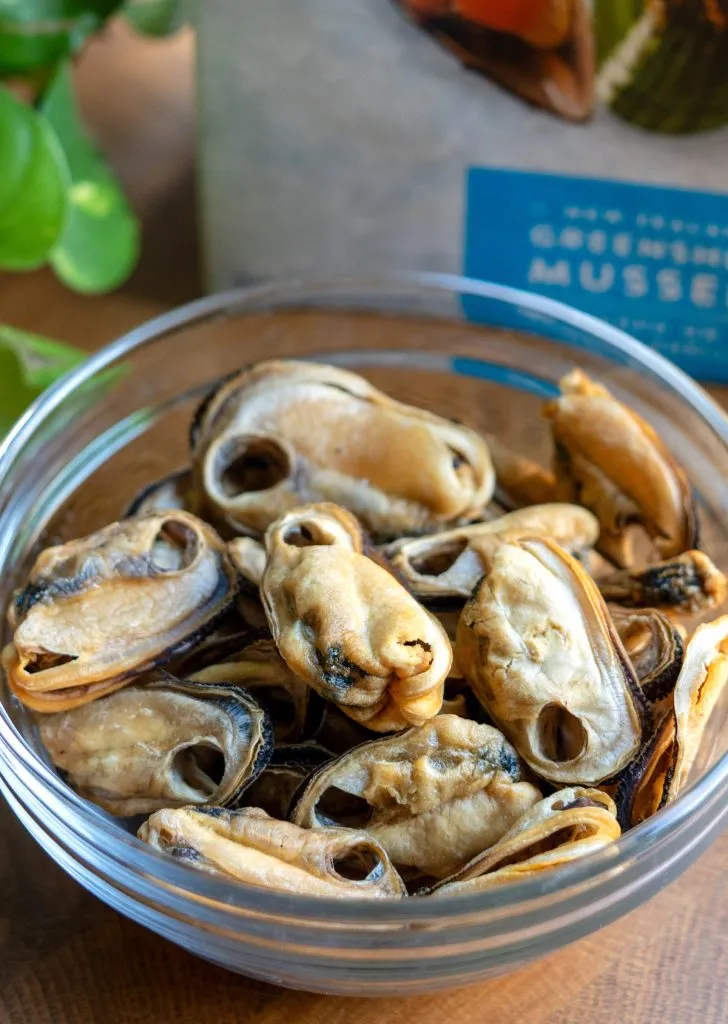 Dehydrated green-lipped mussels, a healthy and beneficial treat for dogs, particularly for joint health.
Dehydrated green-lipped mussels, a healthy and beneficial treat for dogs, particularly for joint health.
Making healthy homemade dog food is a rewarding endeavor that allows you to take an active role in your pet’s health and happiness. By following this vet-recommended recipe, you can provide a diet rich in essential nutrients, tailored to their needs, and free from undesirable additives. Remember to always consult your veterinarian for personalized feeding advice, ensuring this approach perfectly complements your dog’s unique health profile. Your commitment to quality nutrition will undoubtedly translate into a vibrant, energetic, and long-lived companion.
